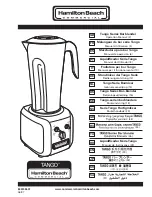
VC-410 & VC410POE Ethernet Extender Manual
INP(Impulse Noise Protection):
Impulse noise in multicarrier communication systems
behaves effectively as a modulating signal that controls the first moment of the background
Gaussian noise. The composite noise, which is the aggregate of the Gaussian noise and
impulse noise, has a probability density function that is conditionally Gaussian with non-zero
average, hence referred to as biased-Gaussian. The BER-equivalent power of the
composite noise source is defined as the power of a pure Gaussian noise source that yields
the same bit-error rate (BER). The BER-equivalent noise for a biased-Gaussian noise is
simply the amplified version of the underlying Gaussian noise source. The amplification
factor is derived from the characteristics of the impulse interference. Any bit-loading
algorithm designed for Gaussian noise sources is also applicable to biased-Gaussian noise
sources provided that the BER-equivalent SNR is used in place of the measured SNR.
SNRM(Signal to Noise Ratio Margin):
It's very similar to a conversation at a party and it's dealt
with in the same way; we naturally account for both distance from the other person and the
amount of background noise. When we do we don't just talk loud enough to be heard, we speak a
bit louder waiting for the idiot with the stupid, loud laugh to start up again. We add a bit extra on to
make sure we're louder than the average change in background noise.
That ratio is a major factor in determining the connection speed, as the higher the ratio the higher
the possible speed. The SNRM is a margin which by which the noise level can rise before
connection is lost.
Safety Caution!
1. Be sure to disconnect the power when installing(uninstalling) the terminal block and
power cable.
2. Please note that the user can use 48VDC power input. Do not exceed DC 48V.
3. Be sure to disconnect the power before installing and/or wiring your VC-410 &
VC410POE bridge.
4. Please calculate the maximum possible current in each power wire and common
wire. Observe all electrical codes dictating the maximum current allowable for each
wire size. If the current goes above the maximum ratings, the wiring could overheat,
causing serious damage to your equipment.
20













































